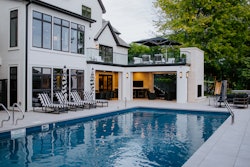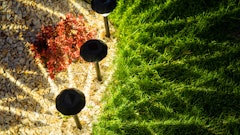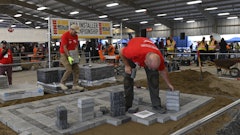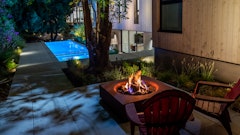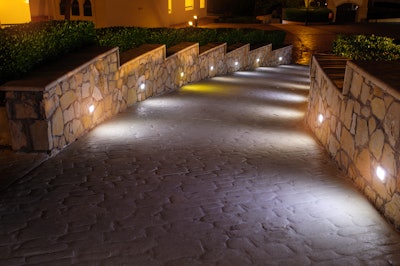
It’s no secret that a well-lit property is a safer property. But lighting can be so much more than a security measure. Jordan Telford, sales manager, Hunter Industries and FX Luminaire, sees outdoor lighting as a way to expand living spaces into the night, emphasize or accent a home and increase profit by “responsibly maximizing a customer’s budget” (more on that later).
Telford has more than seven years of experience in the industry, specializing in lighting and design and works on the west coast and in parts of Canada. His “Growing Profits with Lighting Structures and Hardscapes Techniques” SiteOne webinar presentation explored the brighter side of the green industry with insight into designing, pitching and selling.
The Right Light
Plants, architectural features, flagpoles, pools and more can become focal points with the right lights. To determine the best way to light up a space, we must first understand the different types of lights. Everyone is familiar with your everyday path lights, step lights and back lighting, but looking into less common lighting options can bring a new ambiance to a space. For example, Telford suggests wall light fixtures to illuminate steps instead of step lights. The difference? The entire step is now visible as well as your surroundings (think, handrail or unassuming flowerpot).
Wall lights are easy to install, great for retrofitting and can be surface mounted or recessed. But the best part of substituting step lights with wall lights is the profitability. Take, for instance, a deck with three long steps. Using step lights, that totals just three fixtures. With wall lights, you’re looking at adding six or more fixtures, which will earn you a better profit with a happier customer. Other light fixture options changing the game include:
Down Lighting
- Protects against water intrusion
- Minimizes glare
- Maximize profitability using can light fixtures that don’t need to be wired out to a structure
- Includes hanging lighting for niche areas, stairs or driveways (with trees alongside). The final product looks organic and moves with the wind to create a new, natural effect
- Not yet popular but should be
Mirror Lighting
- Small lights in or around water to create a dramatic effect
- Includes pool, pond, fountain and other water features
- Long-lasting, easy-to-install and versatile
- Leak resistant
Niche Lighting  ronstik/Adobe Stock
ronstik/Adobe Stock
- Hanging lights
- Focus is on a small area
- Often above seating arrangements
- Can be considered down lighting, but usually refers to string lights
Making Your Sales Pitch Shine
The hardest part of the process comes in the selling phase. Your perfect design needs to fit a not-so-perfect budget, differing customer preferences and myriad other surprise setbacks to close a sale. So how do you flip the switch on a deal? Telford advises to keep the customer you’re with, even if it isn’t a dream site.
It’s much easier to help an existing customer who you have built trust with than to find and contract a new customer from scratch. In addition, it is up to you to leave nothing on the table. If there are spaces that could still be better lit after your installation, you are giving your competitors the opportunity to sell to your customer instead. To avoid this, Telford creates designs as if there were no budget to follow, then scales down the design to meet customer wants within the budget parameters. This process guarantees a happy customer and a balanced lighting design.
Where to Begin?
Not sure where to start? Here’s some ideas to begin the sales process…
Identify Viewpoints. Where will people see these lights from? Consider viewing points such as a deck, from the street or from the inside of the home, looking out.
Highlight Points of Interest. Other options to consider are focal points including architectural features, potential safety hazards and statues or fountains.
Visual Direction. Walkways, doorways, driveway edges and garden perimeters offer opportunities for guide lighting. Using a series of small lights or one large central light can direct people’s vision to certain areas or entrances.
 timonko/Adobe Stock
timonko/Adobe Stock
No matter what reason your customer is looking for professional exterior lighting, it’s your job to meet and exceed their expectations. With a firm grasp on different fixtures and how to use them, your designs are sure to wow even the most stubborn client. Stay creative, professional and optimistic.
“It gets dark every night,” Telford says. “Every night there is a new opportunity to sell lighting.”




